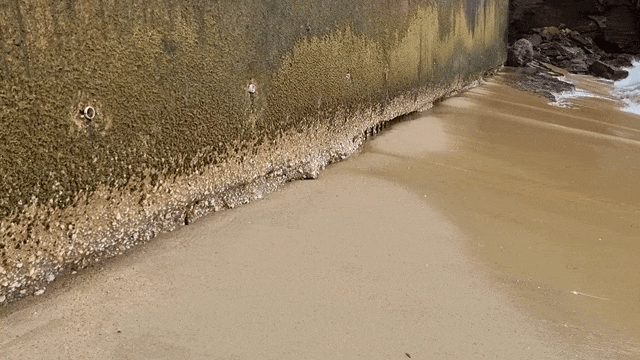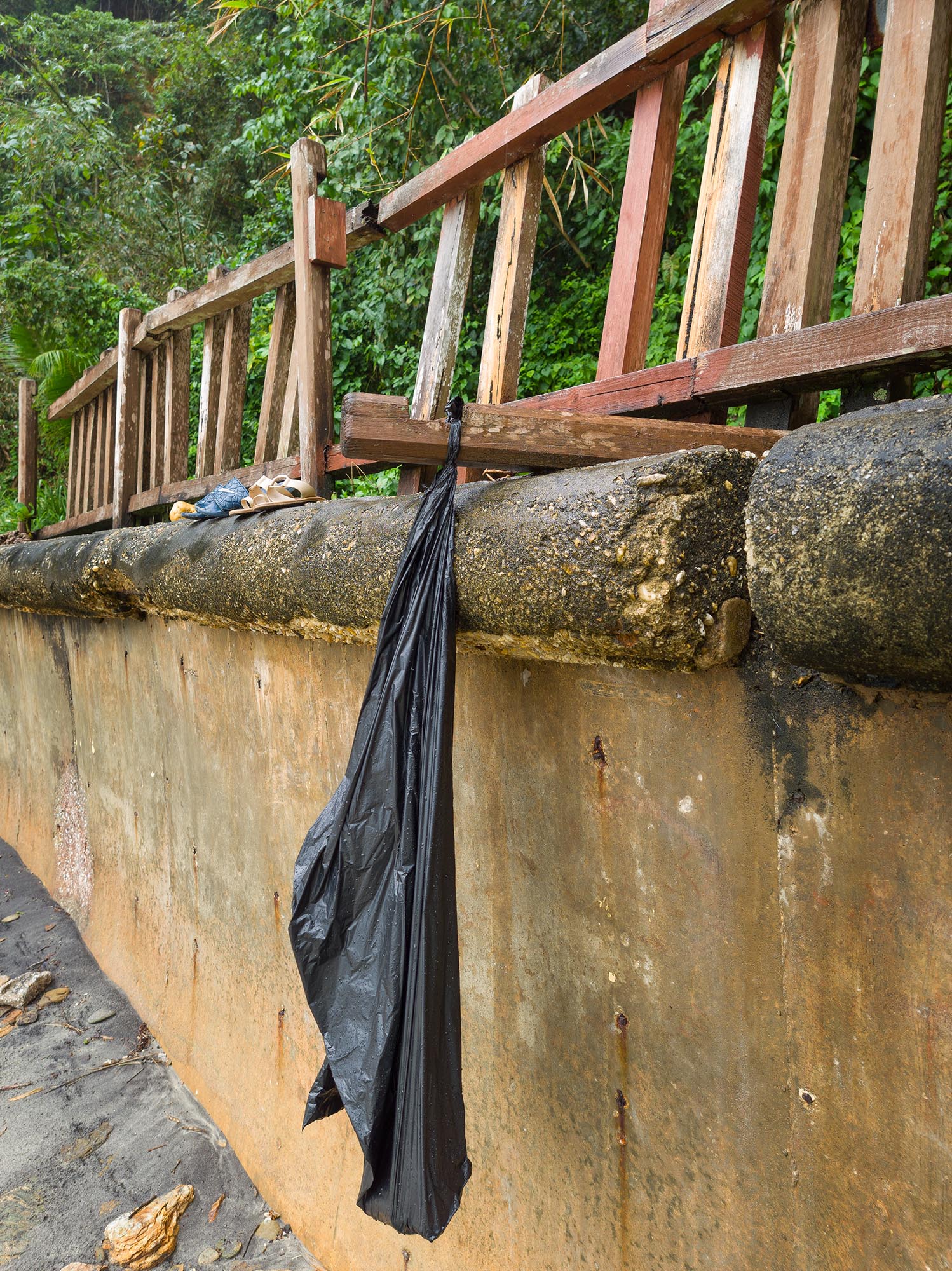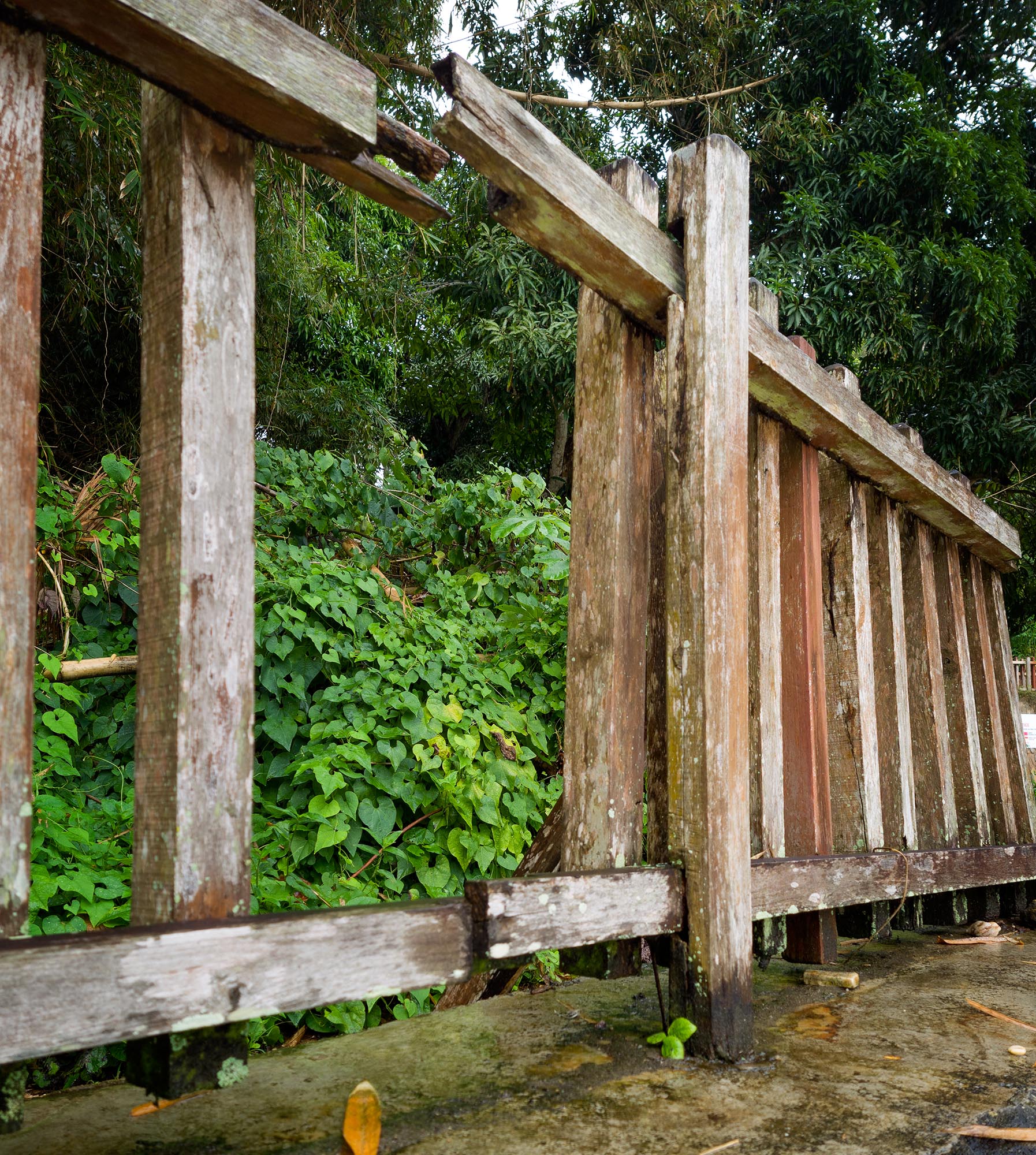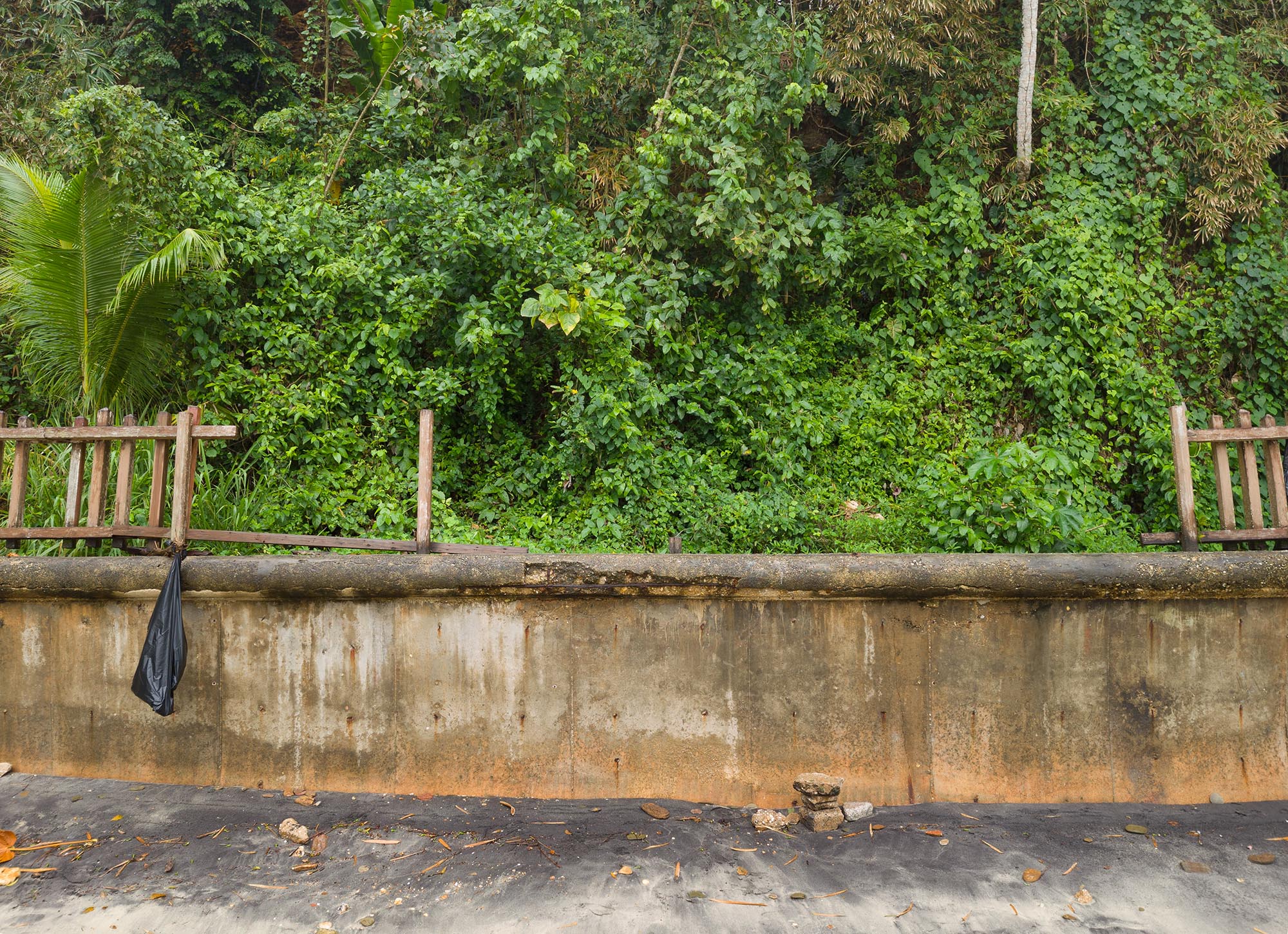On Friday 05 March, Newsday contributor Mark Lyndersay visited Macqueripe Beach for the first time in 2021. This is what he found.
It’s possible that if you visit Macqueripe Beach to swim regularly, its slow deterioration might not seem so apparent, but on my irregular schedule, the collapse of the popular swimmers’ beach seemed, since covid19 restrictions were lifted, to jump forward like a time-lapse disaster film, crumbling in swaths with no effort apparent to address the deterioration.
To get to the bay, a visitor must descent a winding stairwell that was dropped past a carefully landscaped incline, the stair-stepping of the slope a sensible response to potential erosion.
A few palm trees still dot that landscaping exercise, but without any maintenance and with human intrusion breaking apart the terracing, the steep slope is vulnerable to slippage. The stairwell itself is prone to become slippery with the mix of dripping seawater and sand, so the railings placed along the path were a sensible addition when the beachfront was first restored.

All that’s been added since then is an unsightly lifeguard tower, strategically placed in the middle of the view of the bay. It is rarely, if ever, populated by actual lifeguards.
In 2009 Flow tore up the path and slope to land the broadband line, and made good on its obligation not just to restore the access to the beach but also worked to improve it with a system of terracing and grading as part of the landscaping of the steep descent to the beach.
While the potential erosion of the hillside leading to the bay is unsightly and the vast gaps in the available railing are dangerous, a far greater problem is to be found at the southern end of the beach itself, as seawater hammering at a major retaining wall has found a path under the wall. Steady wave action has removed tons of dirt from behind the wall, leaving a vast sinkhole behind that grows larger with each vigorous surge of surf that hammers under the compromised concrete.


A list of questions was sent to acting CDA general manager Karen Clark-Rowley about this. The e-mail was opened twice soon after it was sent, but no response or acknowledgment was offered.
Those questions were, in summary, about these issues regarding the upkeep of Macqueripe Beach Facility.
- Is there a plan to repair the structural and safety features at the bay?
- Is there a timeline for that plan if it exists?
- Were the materials chosen for the refurbishment of the facility appropriate for its intended use?
- Why weren’t repairs undertaken when the facility was closed under covid19 restrictions?
It isn’t the only message to the CDA about Macqueripe to be ignored recently.
The Macqueripe Early Morning Swimmers’ Association (MEMSA) wrote to the CDA’s acting GM in December with a wide-ranging list of concerns about the facility. MEMSA is an informal group of swimmers who use the facility regularly, with a particular enthusiasm for deep-water swimming.
MEMSA’s president Lennox Grant says the letter, which raised issues both aesthetic and practical, was acknowledged as received in a direct conversation between Grant and the GM’s secretary, but no response has been forthcoming.
At this point, Macqueripe is in a bad way, but not yet in complete collapse.
The insistent ocean attack on the retaining wall and the prospect of increased rainfall likely to cause subsidence on the slope leading to the beach are, however, not waiting on a response from the CDA.

| FROM: |
MACQUERIPE EARLY MORNING SWIMMERS’ ASSOCIATION
|
| TO: |
Karen Clark-Rowley
General Manager
Chaguaramas Development Authority
gmdesk@chaguaramas.com
|
05 December 2020
Madam,
With the hope of restoring constructive communications with the Chaguaramas Development Authority, I write to register concerns currently shared by our members and other frequenters of Macqueripe.
As may be confirmed from your records, Macqueripe Early Morning Swimmers’ Association (MEMSA) has long represented the interests of swimmers and others seeking to make safe and enjoyable use of Macqueripe bay, facilities and environment.
It’s in this regard that we have been moved to seek clarification and make representations about the following and other developments giving disturbing rise to questions calling for answers:
The removal, to unsightly effect, of downhill landscaping toward the beach put in place since the CDA-effected site changes around 2008-2009. The continuing collapse of safety railings on the staircases which, with stairs regularly wet and slippery, could endanger especially people going downhill.
Double parking along the Tucker Valley approaches to the bay, near the access points to the old missile tracking station, that impede traffic movement. Untrimmed, overhanging bamboo stems protruding upon vehicle windscreens, and effectively narrowing the driving passageways. Now unsightly, thatched roof sheds left to unusability and ruin along the Tucker Valley Road close to the bay.
CDA officials are urged to appraise the above that evidently qualify as shortcomings or instances of inadvertent management. Be assured that MEMSA members remain ready to help and advise on corrective approaches wherever possible.

